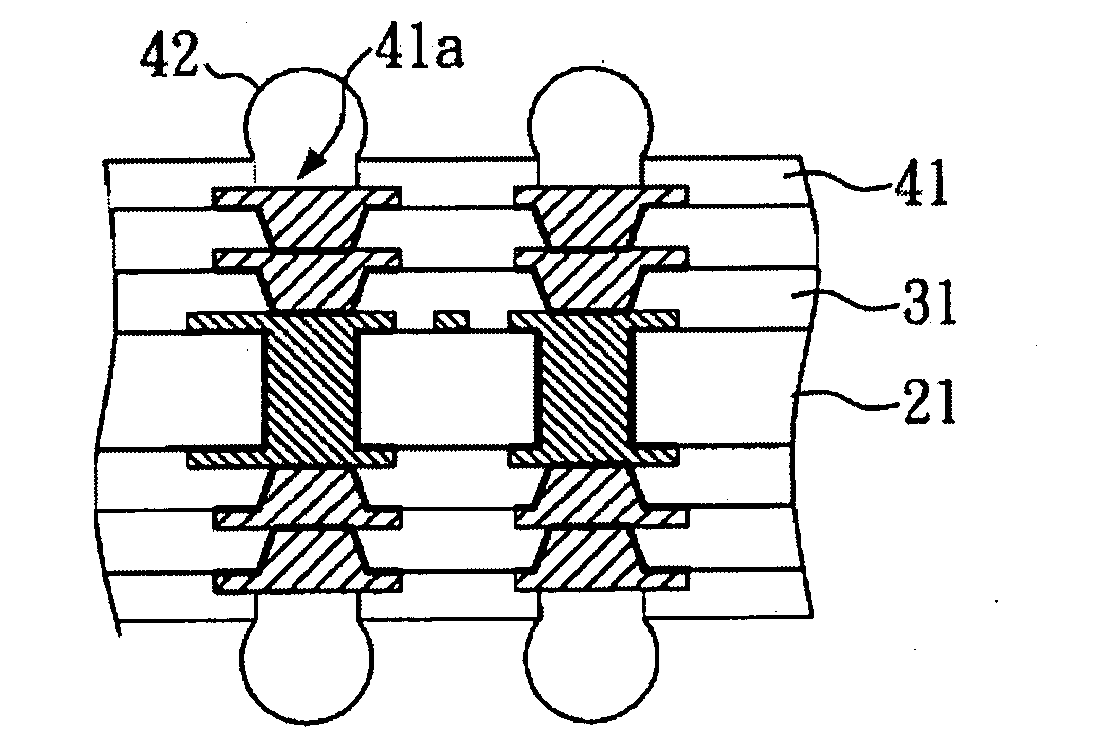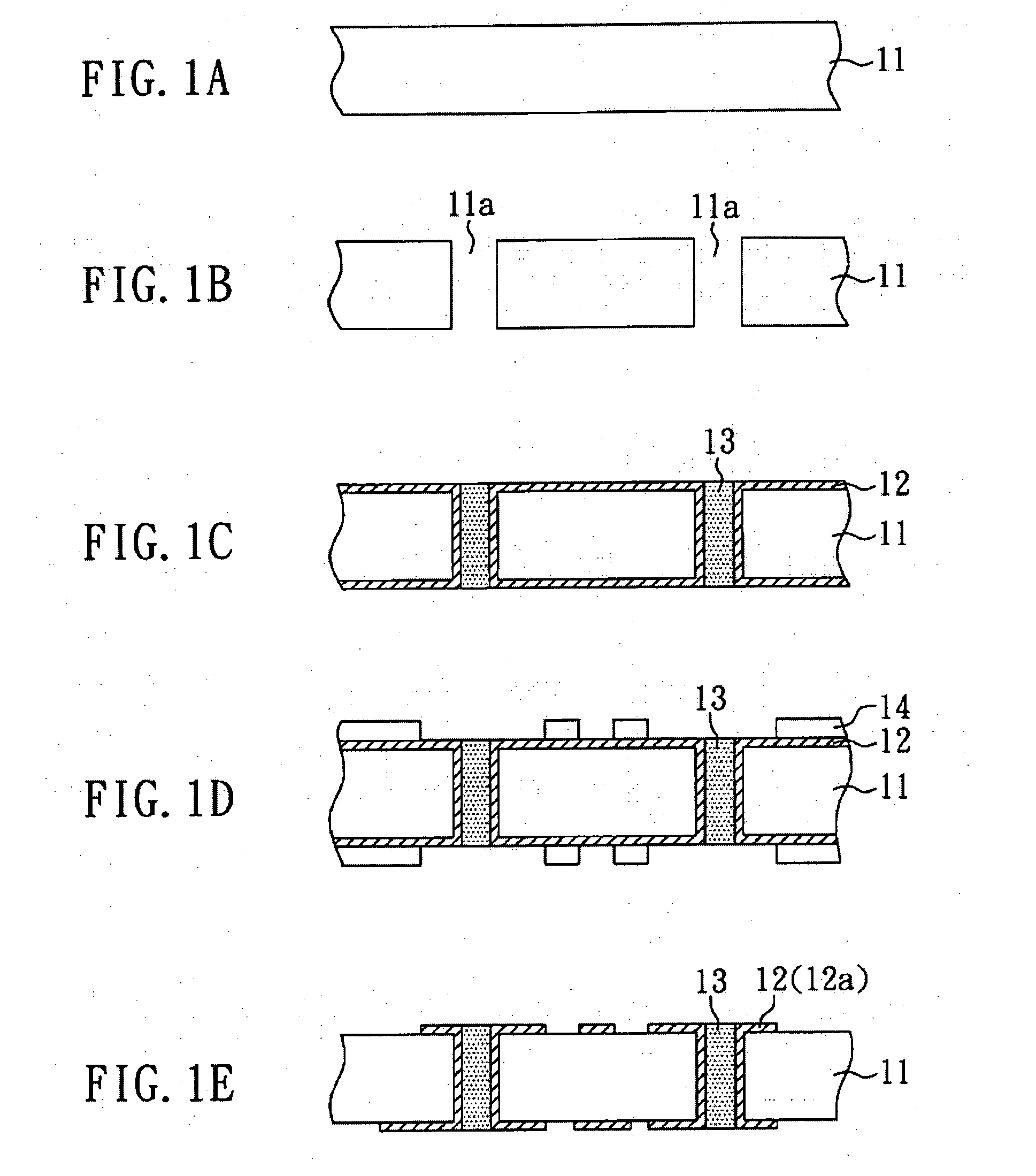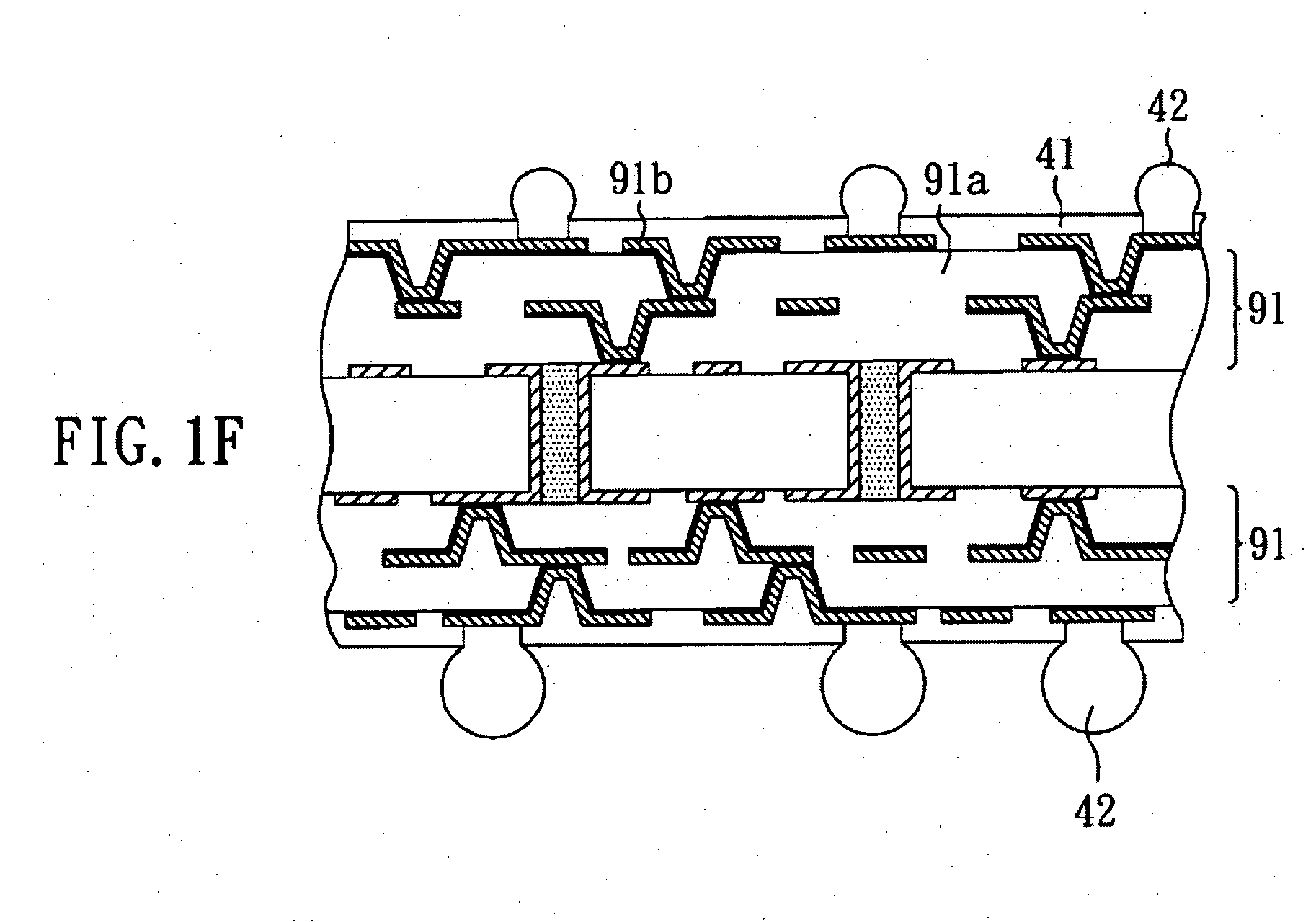Flip-chip substrate
a technology of substrate and chip, which is applied in the direction of printed circuit manufacturing, printed circuit aspects, metallic pattern materials, etc., can solve the problems of reducing yield and reliability, reducing the thermal expansion coefficient of bt resin and abf resin, and preventing substrate warpage, excellent thermal and mechanical properties, and fine-patterned circuit layout
- Summary
- Abstract
- Description
- Claims
- Application Information
AI Technical Summary
Benefits of technology
Problems solved by technology
Method used
Image
Examples
embodiment 1
[0055]With reference to FIGS. 2A to 2N, there is shown a process flow for manufacturing a flip-chip substrate in a cross-sectional view in the present embodiment.
[0056]In FIG. 2A, an aluminum oxide board 21 is provided first as a core board of a flip-chip substrate. Then, a resist layer 22 is formed on the top surface 21a and the bottom surface 21b of the aluminum oxide board 21, as shown in FIG. 2B. The resist layer 22 used in this embodiment is a dry film. Subsequently, a plurality of openings 22a in the resist layer 22 is formed by photolithography, as shown in FIG. 2C.
[0057]After completing the above steps, part of the aluminum oxide board 21 not covered by the resist layer 22 is dissolved by electrolysis to form a plurality of through holes 21c, which penetrate the cross-section of the aluminum oxide board 21, as shown in FIG. 2D. Then, with reference to FIG. 2E, the resist layer 22 is removed so that the aluminum oxide board 21 having a plurality of through holes 21 is obtaine...
embodiment 2
[0065]In this embodiment, an aluminum oxide board is obtained by oxidizing an aluminum board for reduce the producing cost, because the aluminum board, which has low price and good processing property, is suitable for mass-producing and can be transformed into an aluminum oxide board by a simple method, such as oxidizing.
[0066]As shown in FIG. 3A, an aluminum board is provided first. Then, with reference to FIG. 3B, the aluminum board 51 is oxidized to be a non-conductive aluminum oxide board 21 by backing in the air. Further, the procedure illustrated in FIGS. 2B to 2N of embodiment 1 is proceeded to obtain a flip-chip substrate. Therefore, detailed steps of the procedure illustrated in FIGS. 2B to 2N are not described herein.
embodiment 3
[0067]As in embodiment 2, the method for manufacturing a flip-chip substrate of this embodiment is started by providing an aluminum board 51 first, as shown in FIG. 4A.
[0068]Then, with regard to FIG. 4B, a resist layer 52 is formed on the top surface 51a and bottom surface 51b of the aluminum board 51. The resist layer 52 used in this embodiment is a dry film. Subsequently, as shown in FIG. 4C, a plurality of openings 52a is formed in the resist layer 52 by development.
[0069]After the above steps, referring to FIG. 4D, the aluminum board 51 is electrolyzed to solve part of the aluminum board 51 not covered by the resist layer 52 so as to form a plurality of through holes 51c penetrating the cross-section of the aluminum board 51. Further, as shown in FIG. 4E, the resist layer 52 is removed so that a plurality of through holes 51c is obtained. In this embodiment, the through holes 51c are located corresponding to each of the openings 52a and formed by electrolysis. Therefore, the dia...
PUM
 Login to View More
Login to View More Abstract
Description
Claims
Application Information
 Login to View More
Login to View More - R&D
- Intellectual Property
- Life Sciences
- Materials
- Tech Scout
- Unparalleled Data Quality
- Higher Quality Content
- 60% Fewer Hallucinations
Browse by: Latest US Patents, China's latest patents, Technical Efficacy Thesaurus, Application Domain, Technology Topic, Popular Technical Reports.
© 2025 PatSnap. All rights reserved.Legal|Privacy policy|Modern Slavery Act Transparency Statement|Sitemap|About US| Contact US: help@patsnap.com



